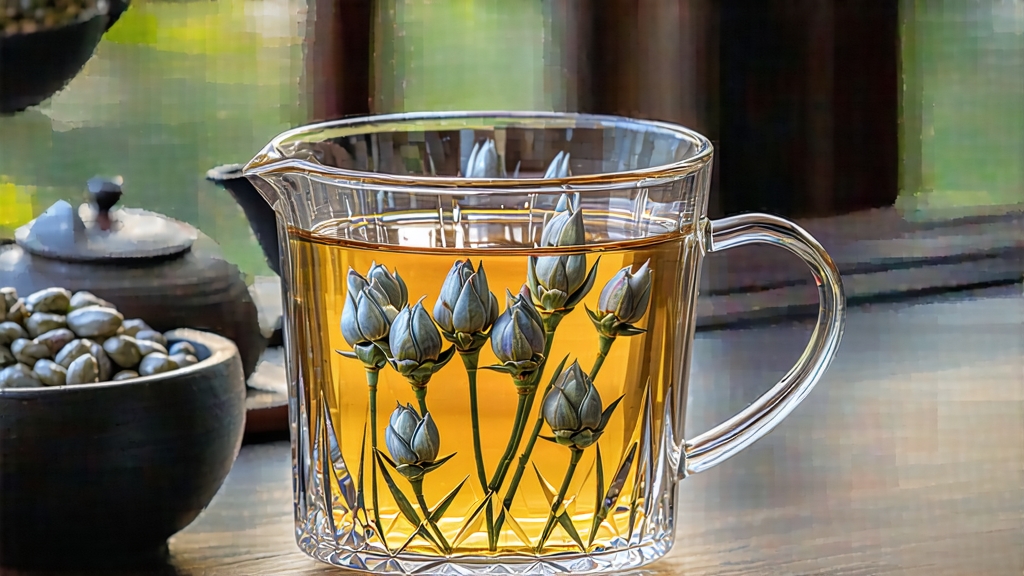
Few teas ask so little and give so much. Fuding Silver Needle—Bai Hao Yin Zhen in the old romanization—stands at the apex of China’s white-tea family, a style so understated that first-time drinkers often mistake its pale liquor for plain water. Yet within that shimmering infusion lies a history stretching back to the late-Song dynasty, a micro-terroir shaped by the East China Sea, and a craft that relies more on patience than on fire. To understand Silver Needle is to understand the Chinese preference for restraint: the belief that the highest refinement hides itself in plain sight.
-
Origins and historical echoes
The counties of Fuding and Zhenghe in northeastern Fujian have quarreled for centuries over who first tamed the “big-white” cultivar (Da Bai Hao). Tax records from 1796 show Fuding magistrates sending “silver tribute tea” to the Jiaqing Emperor; the buds were packed in silk floss, carried by horse to Beijing, and stored in the palace treasury as a medicinal luxury. By the 1870s, European merchants in Fuzhou were already re-exporting the same buds to Victorian London, where they were marketed as “Flowery Pekoe Tips” and sold at twice the price of Keemun. The tea survived the collapse of imperial China, the Japanese occupation, and the Communist collectives; today it is protected under China’s Geographic Indication system, a legal recognition that the flavor cannot be replicated elsewhere. -
Terroir: where the mountains meet the sea
The Taimu mountain range runs like a dragon’s spine along the Fujian coast; its granite peaks force warm, iodine-laden clouds upward, creating a perpetual morning fog that filters UV light and slows photosynthesis. The result is a higher concentration of theanine and aromatic alcohols in the leaf. Soils are lateritic, rich in quartz and mildly acidic—ideal for the Da Bai Hao cultivar, whose buds can reach 3.5 cm in early spring, plump with stored winter sugars. Night temperatures drop sharply, prompting the plant to thicken cell walls; this diurnal swing is the invisible signature that gives Silver Needle its crisp, cool finish. -
The craft of “doing nothing”
White tea is often described as “unprocessed,” yet nothing could be further from the truth. After picking, the buds are spread on bamboo trays exactly one layer thick; they must not overlap, lest trapped moisture create enzymatic hot spots. For the first six hours, the trays rest in a shaded corridor where mountain breeze lowers surface moisture from 75 % to 58 %. Then they are moved into a sunroom with latticed walls, designed so that indirect light bathes the buds for no more than twenty minutes at a time. A master tea maker will flip each tray by hand every seven minutes, using a motion similar to turning a page—gentle, decisive, silent. The process repeats for thirty-six to forty-eight hours, until internal moisture drops to 10 %. No rolling, no pan-firing, no baking: oxidation is allowed to proceed at its own glacial pace, halted only when the leaf cells desiccate beyond enzymatic reach. The final low-temperature bake (40 °C for twenty minutes) is less about drying than about “setting memory,” locking the aromatic molecules in place. -
Grades and micro-seasons
Within the GI boundary, three grades are recognized:- Imperial Tip: buds harvested before Qingming (early April), uniform in length, silvery-green, downy.
- Superior Tip: buds picked between Qingming and Grain Rain, slightly longer, more ivory in color.
- Standard Tip: late-spring buds, often mixed with the first unfolded leaf, yielding a rounder but less ethereal cup.
Connoisseurs further subdivide by weather: a “frost-tip” picked the morning after a late-spring dew carries a faint camphor note, while “sun-tip” harvested on a cloudless afternoon leans toward fresh hay. These distinctions are invisible on a spreadsheet, yet they are traded like vintages in Burgundy.
-
Brewing: the art of whispering water
Silver Needle is delicate, but not fragile; its cell walls are thick enough to withstand 85 °C water, provided the brewer respects time. The classic gaiwan ratio is 1 g of buds to 20 ml of water, but a Western teapot can be coaxed into equal grace using 3 g per 250 ml. First, rinse